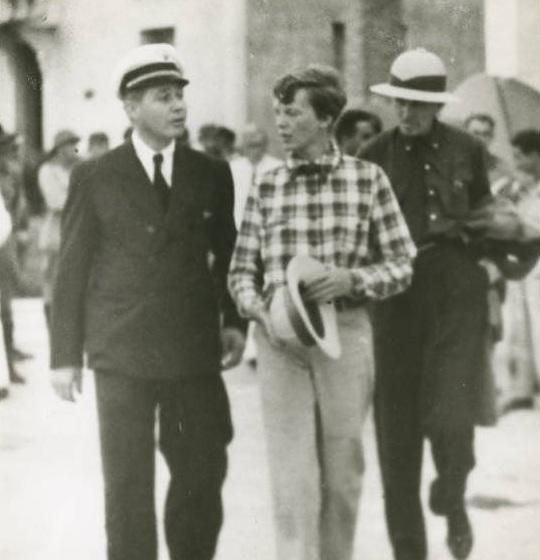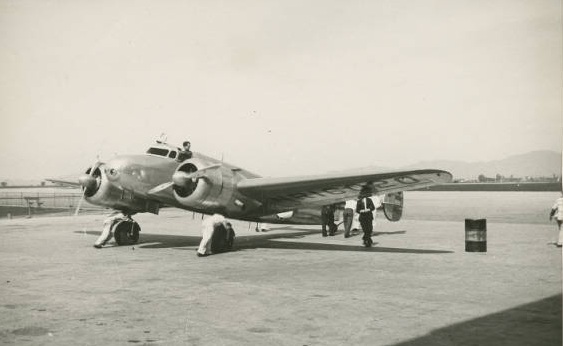

It was 3.15 in the morning when we left Parnamirim Airport at Natal, Brazil. The take-off was in darkness. The longer runway, which has lights, was unavailable because a perverse wind blew exactly across it. So I used the secondary runway, whose surface is of grass. In the dark it was difficult even to find it, so Fred and I tramped its length with flashlights to learn what we could and establish something in the way of guiding landmarks, however shadowy. Withal, we got into the air easily. Once off the ground, a truly pitch dark encompassed us. However, the blackness of the night outside made all the more cheering the subdued lights of my cockpit, glowing on the instruments which showed the way through space as we headed east over the ocean. “The night is long that never finds the day,” and our night soon enough was day. I remembered, then, that this was my third dawn in flight over the Atlantic. . . .
— Amelia Earhart
Fred Noonan wrote in a letter from Dakar, “The flight from Natal, Brazil produced the worst weather we have experienced—heavy rain and dense cloud formations. . . .”
In her notes, Earhart wrote, “. . . Have never seen such rain. Props a blur in it. See nothing but rain now through wispy cloud. . . .”
— from Finding Amelia by Ric Gillespie, Naval Institute Press, 2006, Chapter 5 at page 41.
The poor weather made it impossible for Noonan to find their way across the ocean by celestial navigation, his field of expertise. Instead, he had to navigate by ded reckoning (short for deductive reckoning, not “dead”) and to estimate course corrections.
When they arrived over the African coastline at dusk, they knew that they were north of their intended course but haze caused very limited visibility. Navigational errors had caused them to miss Dakar, so they turned north until they came to Saint-Louis, where they landed after a 1,961 mile (3,156 kilometer), 13 hour, 22 minute flight.


© 2019, Bryan R. Swopes












